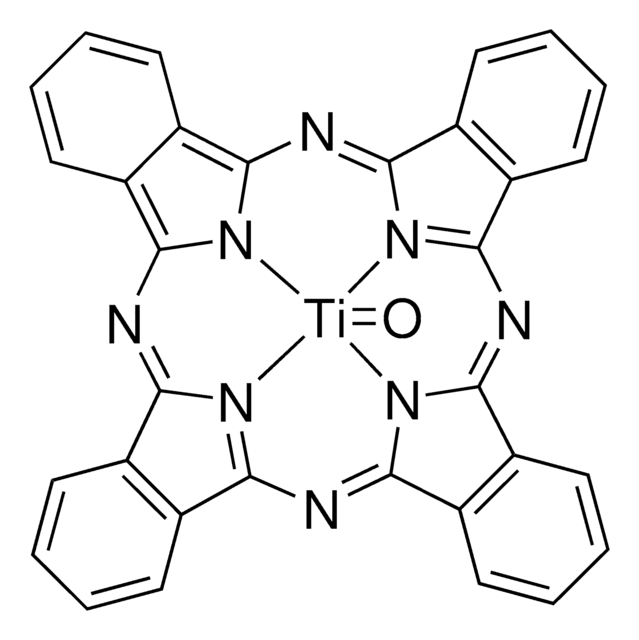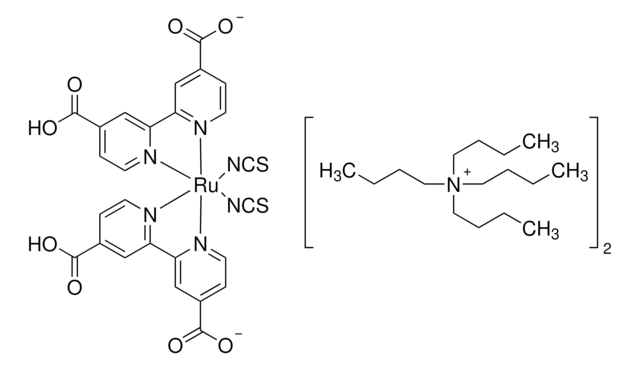791547
Titania paste, transparent
Sinónimos:
Greatcell Solar®, TiO2 paste
About This Item
Productos recomendados
description
Crystal Structure: > 99% anatase (analysis carried out on starting material, prior to paste manufacture)
form
paste (yellow)
concentration
19.0 wt. %
avg. part. size
20 nm (active)
viscosity
40000-55000 mPa.s(20 °C) (Analysis carried out at 20°C with 20mm 4 degree cone/plate; 40 s-1))
SMILES string
[Ti](=O)=O
InChI
1S/2O.Ti
InChI key
GWEVSGVZZGPLCZ-UHFFFAOYSA-N
General description
Application
Transparent Titania Paste is formulated to yield sintered film thicknesses of 6-7μm when screen printed with a 43T mesh. Transparent Titania Paste has highly dispersed and stable anatase nanoparticles.
It is optimised for screen printing using a synthetic 43T mesh screen (or similar). After drying; this paste must be fired at or above 500°C. This results in a transparent sintered layer; with a film thickness of approximately 6-7μm for one printed layer and ~12μm for two printed layers; when using a 43T mesh screen.
The paste exhibits optimal rheological properties that provide good surface uniformity and contains organic binders specially formulated to provide versatile porosity suitable for a range of dye/electrolyte systems.
Storage: Store in the dark at 20°C
Legal Information
signalword
Warning
hcodes
Hazard Classifications
Eye Irrit. 2 - Skin Irrit. 2
Storage Class
10 - Combustible liquids
wgk_germany
WGK 1
flash_point_f
195.8 °F - closed cup
flash_point_c
91 °C - closed cup
Elija entre una de las versiones más recientes:
¿Ya tiene este producto?
Encuentre la documentación para los productos que ha comprado recientemente en la Biblioteca de documentos.
Los clientes también vieron
Artículos
Professor Shinar (Iowa State University, USA) summarizes the developments of a variety of sensor configurations based on organic and hybrid electronics, as low-cost, disposable, non-invasive, wearable bioelectronics for healthcare.
Organic photovoltaics (OPVs) represent a low-cost, lightweight, and scalable alternative to conventional solar cells. While significant progress has been made in the development of conventional bulk heterojunction cells, new approaches are required to achieve the performance and stability necessary to enable commercially successful OPVs.
While dye sensitization as the basis for color photography has been accepted for a very long time,1 attempts to use this principle for the conversion of solar light to electricity generally had resulted only in very low photocurrents, below 100 nA/cm
Professor Tokito and Professor Takeda share their new materials, device architecture design principles, and performance optimization protocols for printed and solution-processed, low-cost, highly flexible, organic electronic devices.
Nuestro equipo de científicos tiene experiencia en todas las áreas de investigación: Ciencias de la vida, Ciencia de los materiales, Síntesis química, Cromatografía, Analítica y muchas otras.
Póngase en contacto con el Servicio técnico








